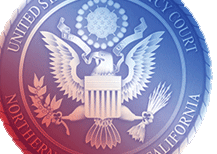9045-1. Dispute Resolution Procedures.
|
(a) Availability of Resolution Advocate.
Promptly after appointment, a Resolution Advocate not available to serve in the Matter shall notify the parties, the alternate Resolution Advocate, and the BDRP Administrator's staff assistant of that unavailability. The alternate Resolution Advocate shall thereafter serve as the Resolution Advocate.
(b) Initial Telephonic Conference.
As soon as practicable after notification of appointment, the Resolution Advocate shall conduct a telephonic conference with counsel for the parties to provide preliminary information to the Resolution Advocate concerning the nature of the Matter, the expectations of the parties, and anything else which will facilitate the process.
(c) BDRP Conference Scheduling.
Within 7 days of the telephonic conference, the Resolution Advocate shall give notice to the parties of the time and place for the BDRP conference, which conference shall commence not later than 28 days following the date of appointment of the Resolution Advocate, and which shall be held in a suitable neutral setting, such as the office of the Resolution Advocate, at a location convenient to the parties. Upon written stipulation between the Resolution Advocate and the parties, the BDRP conference may be continued for a period not to exceed 28 days.
(d) BDRP Statements.
Unless modified by the Resolution Advocate, no later than 14 days after the date of the order assigning the Matter to the BDRP, each party shall submit directly to the Resolution Advocate, and shall serve on all other parties, a written BDRP statement. Such statements shall not exceed 15 pages (not counting exhibits and attachments). While such statements may include any information that would be useful, they must:
|
|
|
|
(1) Identify the person(s), in addition to counsel, who will attend the session as representative of the party with decision making authority;
|
|
|
(2) Describe briefly the substance of the dispute;
|
|
|
(3) Address whether there are legal or factual issues whose early resolution might appreciably reduce the scope of the dispute or contribute significantly to settlement;
|
|
|
(4) Identify the discovery that could contribute most to equipping the parties for meaningful discussions;
|
|
|
(5) Set forth the history of past settlement discussions, including disclosure of prior and any presently outstanding offers and demands;
|
|
|
(6) Make an estimate of the cost and time to be expended for further discovery, pretrial motions, expert witnesses and trial; and
|
|
|
(7) Indicate presently scheduled dates for further status conferences, pretrial conferences, trial or otherwise.
|
|
(e) Statements Not To Be Filed.
The written BDRP statements shall not be filed with the Court and the Court shall not have access to them.
|
|
|
(f) Identification of Participants.
Parties may identify in the BDRP statements persons connected to a party opponent (including a representative of a party opponent's insurance carrier) whose presence at the BDRP conference would improve substantially the prospects for making the session productive; the fact that a person has been so identified, shall not, by itself, result in an order compelling that person to attend the BDRP conference.
|
|
|
(g) Documents.
Parties shall attach to their written BDRP statements copies of documents out of which the dispute has arisen, e.g., contracts, or those whose availability would materially advance the purposes of the BDRP conference.
|
|



